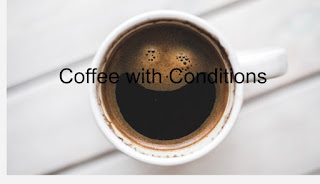Welcome to Woodlawn
Welcome to my last action project of my Junior year. In this term, we have been learning about urban planning. W had great opportunities to met with professionals within this field of study. While urban planning does not speak to my personal interests, I really enjoyed learning more about the thought behind the structure of my neighborhood. For this AP, I was asked to redesign a city block of my choosing. I decided to do a block near my house that tends to have higher crimes rates. I based my project with the idea in mind that I wanted to make a safer community. I believe I was able to accomplish that. I hope you enjoy learning more about my neighborhood and my redesign.
Welcome to Woodlawn! Located on the south side of Chicago, with an area of 2.07 mi^2 and a population of 23,000, Woodlawn is a neighborhood in between an affluent Hyde park and a struggling Englewood. This neighborhood is known for its high crime rates, poorly invested in schools, and low employment rates. With its close proximity to the University of Chicago and the new Obama Foundation along with the accessibility to CTA train and bus routes, Woodlawn should be prosperous and constantly flourishing, however, because of the city's history of systemic racism, segregation, and, specifically refusal to allow black people the ability to buy property, Woodlawn remains under-resourced and under-invested in.
How can we create a more flourishing community without repeating history and pushing minorities out? In recent years, organizations like Preservation of Affordable Housing (POAH) have encouraged and helped finance homeownership, which in turn has been proven to lower crime rates.
In my city block plan, with an area of approximately 392 m^2, I want to focus on homeownership of this majority-Black community. On the block between south Vernon and south Rhodes, between east 61st and east 62nd streets. Currently, there are about 12 - 16 homeowners on this block, more specifically, owners in residence. According to the Census Bureau and FBI, “states with higher homeownership rates have lower crime rates”. Just looking at the difference between Vernon and St. Lawrence, a street two blocks over, there is a lower crime rate and more homeowners.
I would like, in my redesign, to encourage people within the community to invest in property. I do realize that in order for people to be able to afford buying houses, they need either better paying jobs or outside assistance. I would like to work with the city or other private investors and propose offering grants to help with this. As pointed out in the United Nations Sustainable Development Goal 11, which focuses on sustainable cities and developments, this helps target 11.1 to “ensure access for all to adequate, safe and affordable housing and basic services and upgrade slums.”
Keeping in mind that there are a lot of religious people within this community, I would like to retrofit an existing church located on Vernon street. In a more sustainable effort and to keep community members alright with change in their neighborhood, I believe retrofitting this church would make more sense.
Historically, Woodlawn had been known as a food desert until a grocery store was opened a couple blocks away. Yet, there is room for more improvement in access to healthy foods and green spaces overall. I would like to place a community garden stretching from Vernon to Eberhart in what are now vacant lots. This community garden would address SDG 11, target 11.7: “By 2030, provide universal access to safe, inclusive and accessible, green and public spaces, in particular for women and children, older persons and persons with disabilities.”
Some inspiration for adding greenspace into my design has to do with the research on green spaces improving mental health. In an urban setting, with building and infrastructure surrounding us, green spaces can also be visually appealing. With many empty lots around Woodlawn with seemingly no use for them, an easy solution is to add some greenery.
After the fall of the Berlin wall, the people of Germany began turning the ruins into green spaces. They “transformed into a 9-mile-long chain of parks, meadows and urban woodlands” by utilizing the space they had to make a change for the better.
In an effort to improve this community block, I would like to include adequate street lights and road repairs. Driving through the street specified in this block is not an easy task and people in this community deserve roads that are safe and reliable to drive on; this being a basic form of luxury when living in a city.
Works Cited:
Gornstein Aaron, President and CEO, et al. “Welcome to POAH.” Preservation of Affordable Housing |, 29 Mar. 2022, https://www.poah.org/.
Barrington, Richard. “A New HSH Study Looks at the Link between Homeownership and Lower Crime Rates.” Hsh.com, 28 Apr. 2014, https://www.hsh.com/finance/real-estate/homeownership-impact-crime.html.
Schuler, Timothy A. “Berlin's Urban Evolution.” The Nature Conservancy, 26 May 2022, https://www.nature.org/en-us/magazine/magazine-articles/berlin-urban-evolution/.

Comments
Post a Comment